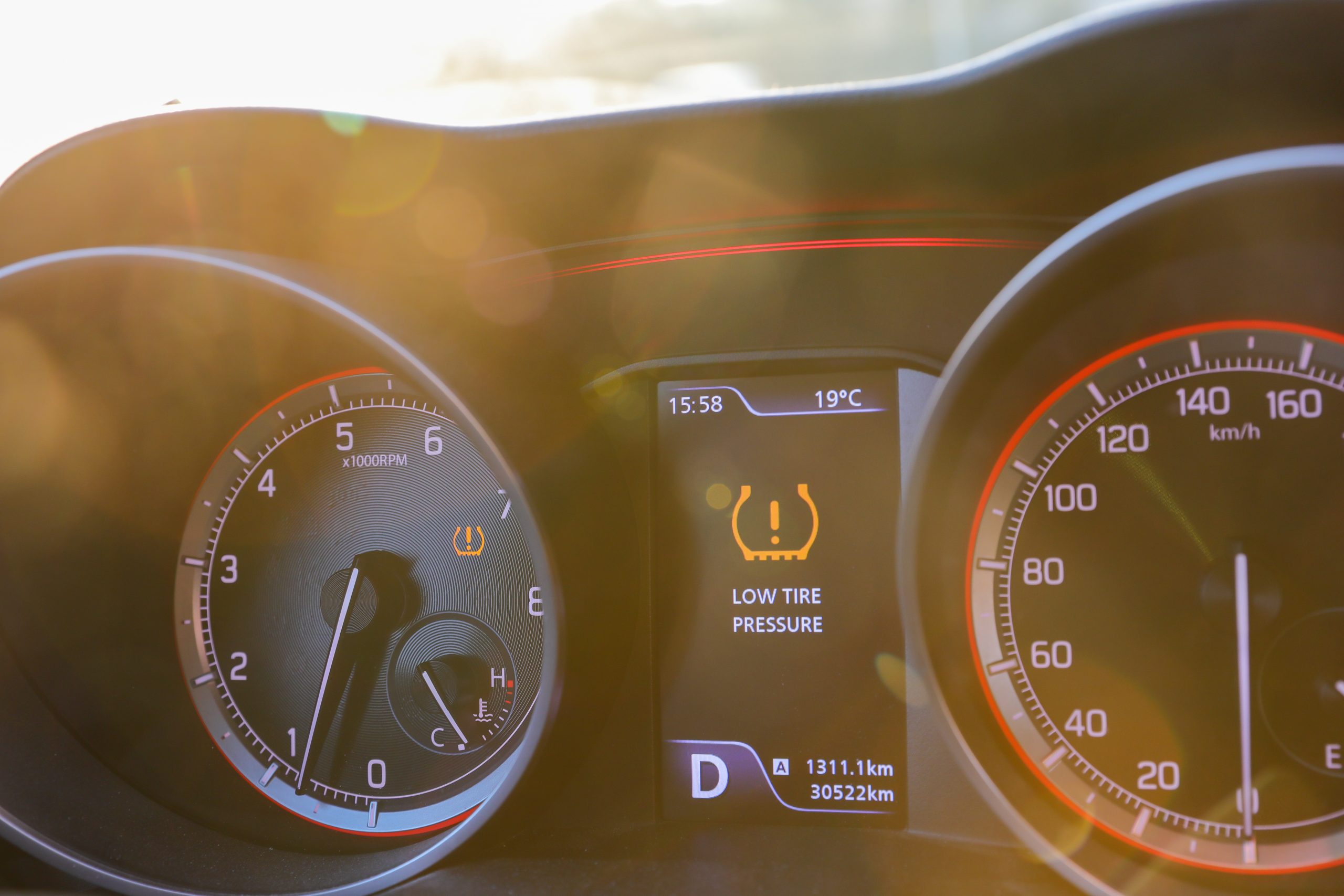

One of the most enjoyable aspects of the fall season are the warm days, and cool nights. However, these temperature variations from day to night many times may affect the air pressure in your vehicle’s tires. In this month’s blog, we discuss why your air pressure may be lowered in the fall, and how to address a low air pressure situation with your tire(s).
Air Pressure and Temperature
There is a simple correlation of PSI (the unit of measurement for air pressure), and temperature. When the air is colder, it condenses and when the air is warmer, it expands. Think of the air inside your tires under these two different temperature variances. If the temperature is lower, then the tire will have lower air pressure and become underinflated. The opposite of this is when the air pressure is higher due to the temperature being higher, you will notice your tires are overinflated.
Tire Pressure Monitoring System (TPMS)
Most vehicles today have a built-in tire pressure monitoring system that alerts drivers to changes in air pressure. Some systems may indicate the current pressure and display the pressure for all the tires. Other systems may only indicate that there is a pressure difference with one or more tire.
If your TPMS displays a warning, take the following steps to address any air pressure changes:
- Using an air pressure gauge, check the pressure for each of your tires.
- Consult with your tire manufacturer to determine the appropriate air pressure for your tires. Each tire manufacturer may be different, as well as the differences in tire size and type.
- Inflate your tire(s) to the approved pressure.
- Check to see that your TPMS alert is no longer displaying on the dashboard.
- If your TPMS continues to illuminate, it may take a few minutes to self-reset. If the TPMS does not reset after driving, it may need to be manually reset. Or it could indicate another issue with your tires, such as damage or a leak.
- If you are driving and the warning light is still illuminated, find a safe place to park to visually inspect your tires.
- Examine the tire treads and sidewalls for any signs of damage or protruding objects.
- Objects that may become impacted in your tires may include pieces of metal or glass, nails, or screws.
- If you do not see any visible damage, but the pressure monitor is still lit, have your tires inspected by a service professional.
- In some cases, the TPMS may need to be manually reset by a service professional.
When your tire pressure changes, don’t ignore this important safety item. Seasonal changes are only one reason why you may experience fluctuations in your tire pressure. Make sure to address any tire issues or concerns as soon as possible to avoid a blowout or flat.
If you would like to have your tires or TPMS inspected, contact us today at Car Kings to schedule an appointment.
